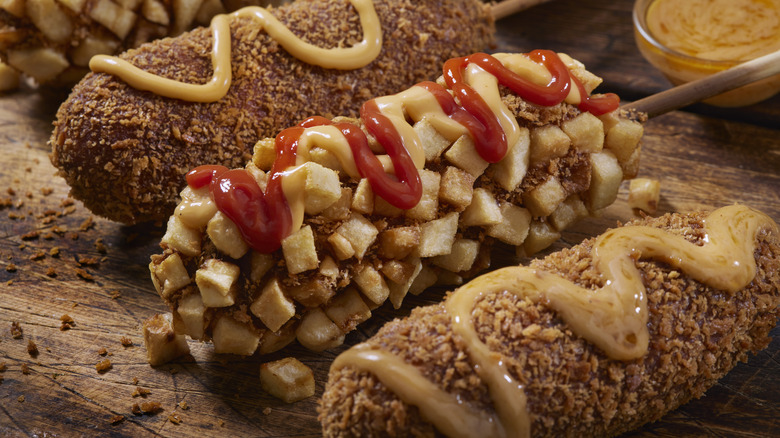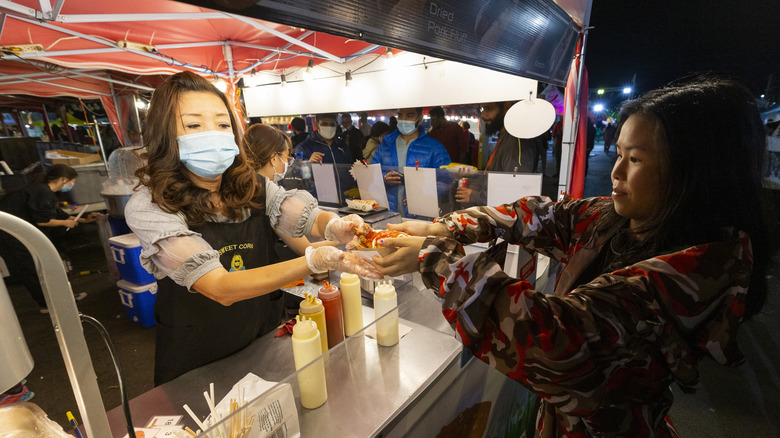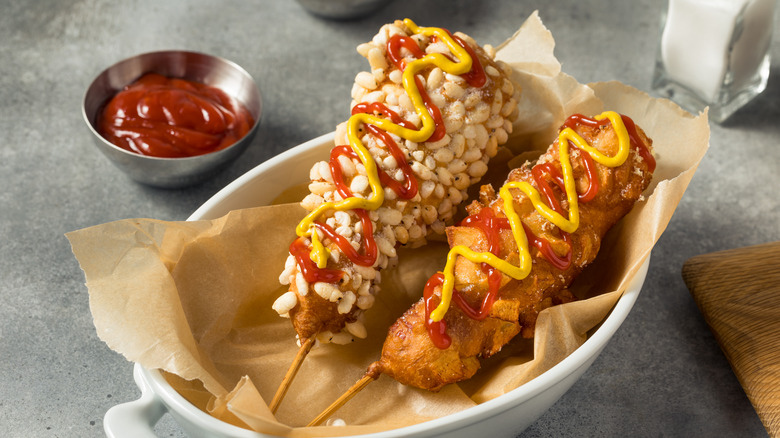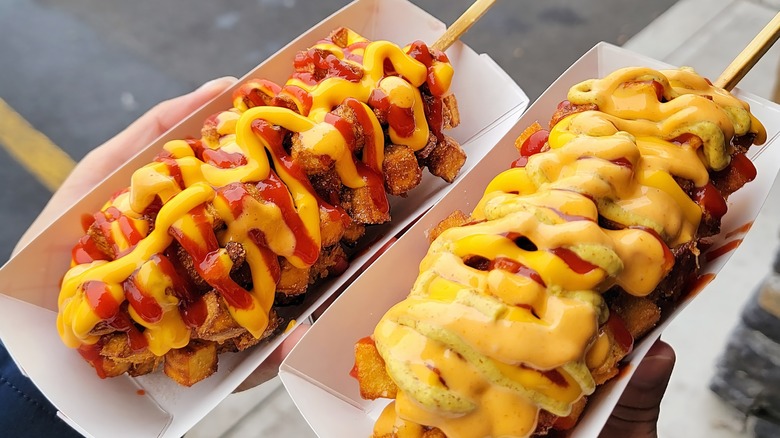The Fun Of Korean Corn Dogs Are The Bonus Ingredients In The Batter
With the rise in popularity of Korean street food, it isn't any wonder that the Korean twist on a classic American corn dog has quickly become everyone's favorite food on a stick. The Korean corn dog, or "hot dog" as it's called in South Korea, looks a lot like your traditional state fair corn dog but it is a world apart. For one thing, although Korean corn dogs are fried and served on a stick, the batter doesn't actually contain corn. And that's just the start — Korean cooks up the corn dog game by seasoning the batter with other sweet and savory ingredients like sugar or nacho chips, adding swoon-worthy complexity to the dish.
Best of all, Korean corn dog chains are firmly entrenched on both coasts of the United States and are establishing a presence in the Midwest. If you're not already near a location of one of the half-dozen Korean corn dog chains, they're readily available online. Let's explore the ins and outs of this wonderful fried food.
Where did Korean corn dogs come from?
Corn dogs in Korea gained popularity as a street food in the 1980s, but over the years the evolution of the corn dog went from its traditional cornmeal battered hot dog to something much more elaborate and unique. Largely this is because of Myungrang Hotdogs, a chain that began in Busan in 2016 specializing in the Korean corn dog as we know it today.
You may not be able to find Korean corn dogs at any old supermarket in the U.S. despite their popularity, but they could be more accessible than you think. Their availability will largely depend on what part of the country you're in, but with the growth of chains like Myungrang and Kong Dog, they're often just a Postmates away. This year, the North Carolina state fair has added the Korean corn dog to its deep-fried menu. Even places like Arkansas, Texas, and Kansas are welcoming the chain Two-Hands and its Korean corn dog.
No ordinary corn dog
Your run-of-the-mill hot dog on a stick and the Korean corn dog do look quite similar, but don't let appearances fool you: the stick might be the only thing they have in common. For starters, there isn't any cornmeal present in the Korean corn dog batter. Instead, the batter is made with wheat and rice flour to give it a chewier texture. By that metric, some might say it isn't really a corn dog if there's no corn in it. However, the Korean dog retains the crisp, crunchy exterior that we would argue makes a corn dog a corn dog.
Oftentimes, Korean corn dogs don't even have a hot dog inside of them. There are many types of fillings from fish sausages to rice cakes, but the most popular filling might be cheese. You can find just about every kind of cheese as a filling in Korean corn dogs, giving them either a creamy or stretchy texture. If you can't decide on a filling, you don't even have to choose. You can pick more than one option like the popular half dog/half cheese stick combo.
Korean corn dog toppings
The fillings are only half the fun of the Korean corn dog — the real appeal is the batter add-ons and toppings. The batter is the vessel for anything you can think of; some of the more popular options are instant ramen noodles and french fries that are put in the batter before dipping and frying. After they are fried the topping-encrusted dogs are coated with anything and everything from granulated sugar to powdered Hot Cheetos. The combinations are limited pretty much only by your imagination.
You can serve your Korean corn dogs with traditional dipping sauces like ketchup and mustard, as both lend themselves to pairing with both savory and sweet toppings. The acidity of the mustard goes surprisingly well with sugar-coated corn dogs. You can also choose a sauce or relish that best compliments whichever version of Korean corn dog you're about to eat. Who knows? You might just kick off another food trend.



